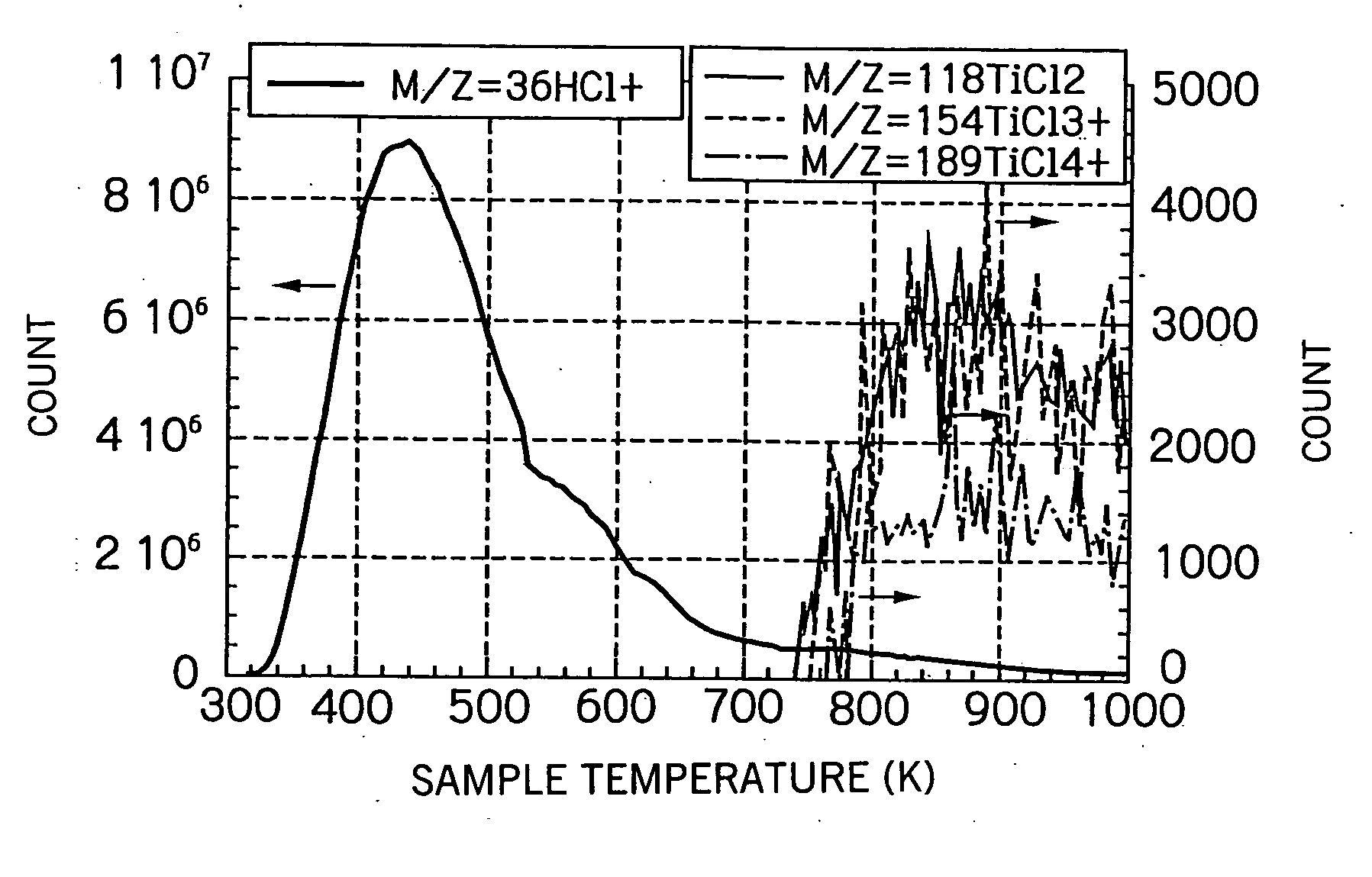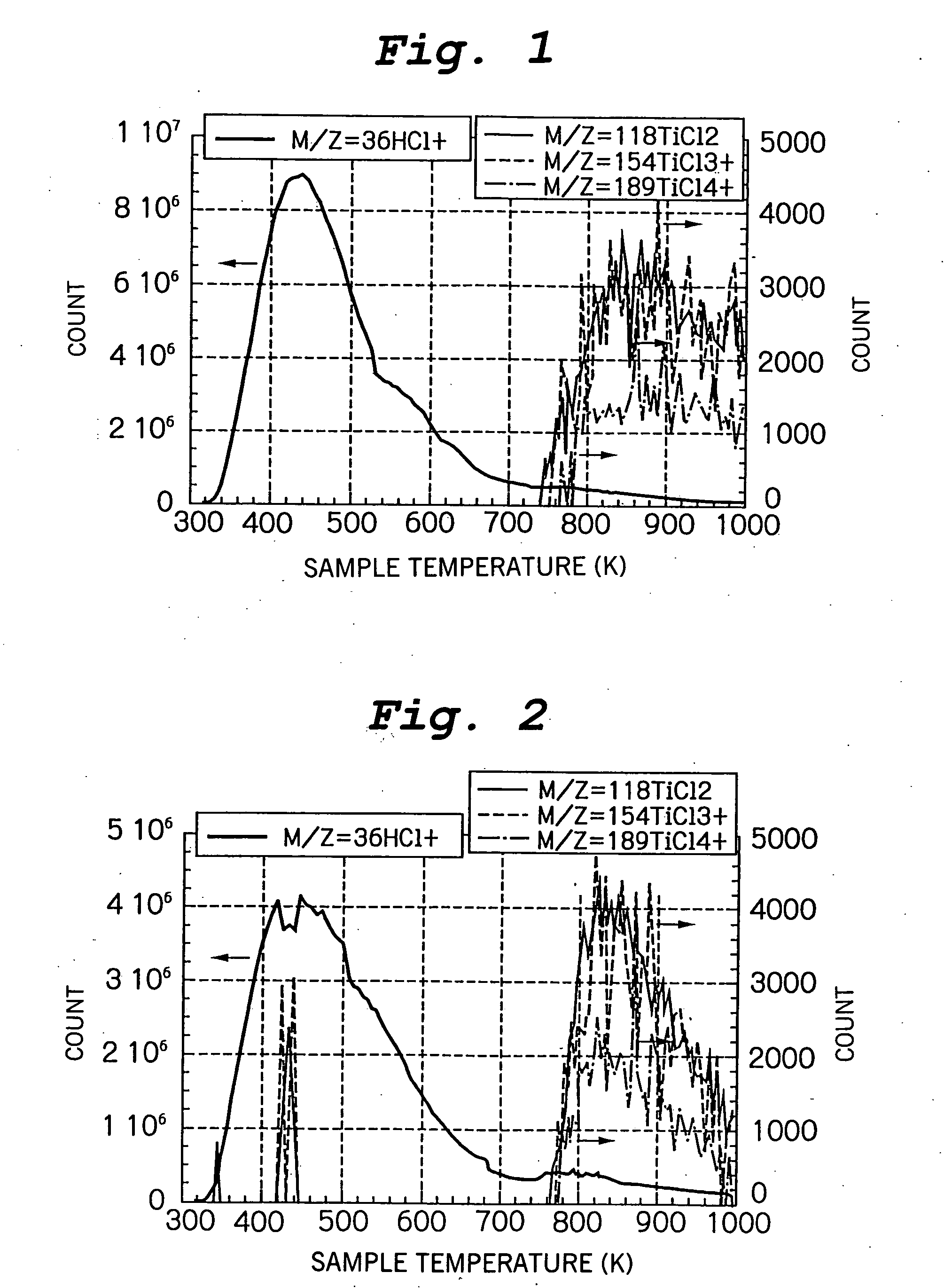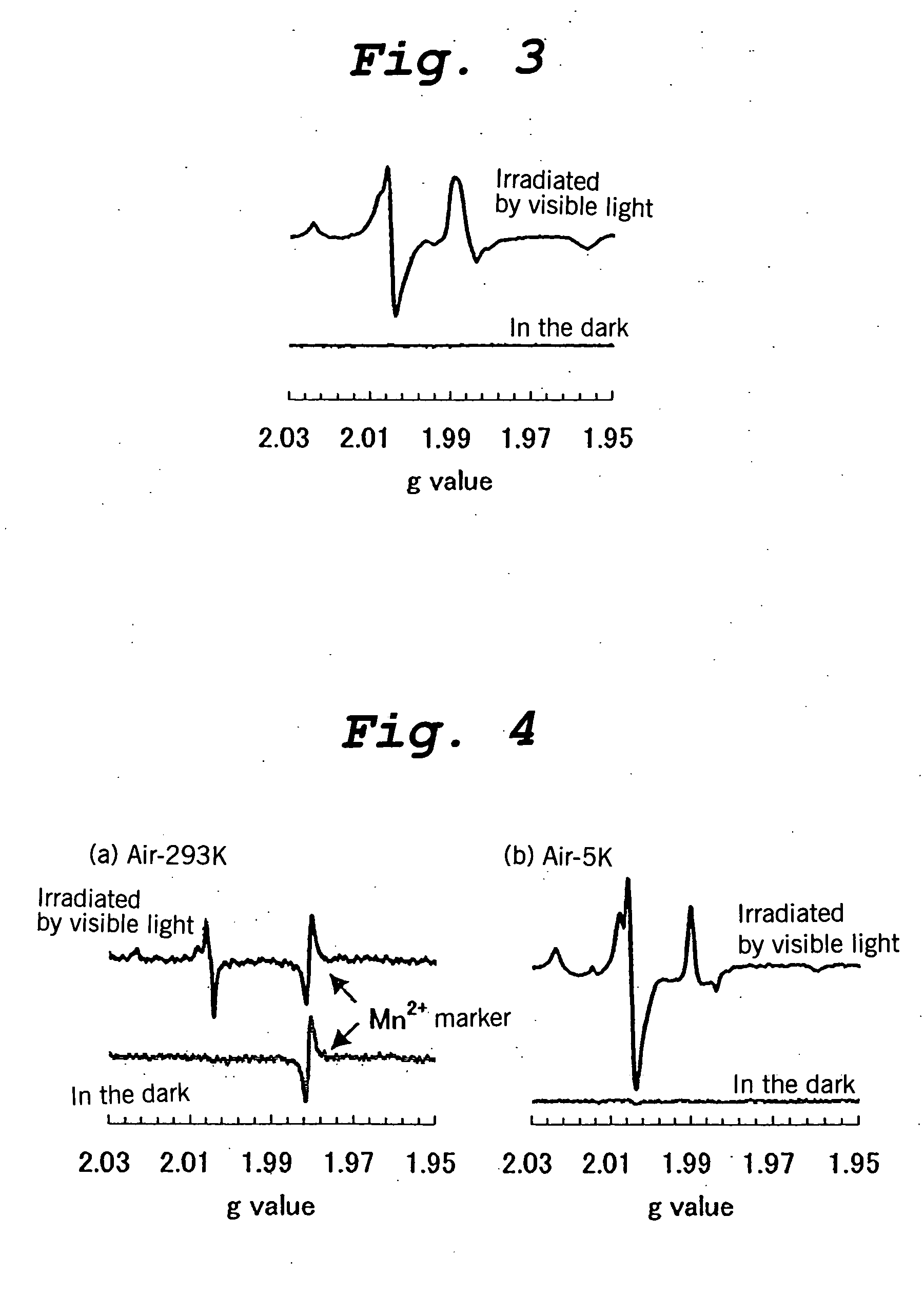Titanium oxide photocatalyst, process for producing the same and application
a technology of titanium oxide and photocatalyst, which is applied in the direction of physical/chemical process catalyst, metal/metal-oxide/metal-hydroxide catalyst, separation process, etc., can solve the problem of reducing the reproducibility of photocatalytic activity, limiting the place where the photocatalyst is located, and reducing the photocatalytic activity itself. problem, to achieve the effect of increasing the photocatalys
- Summary
- Abstract
- Description
- Claims
- Application Information
AI Technical Summary
Benefits of technology
Problems solved by technology
Method used
Image
Examples
example 1
[0140] Preparation of a Titanium Oxide-Based Photocatalyst
[0141] 0.5 grams of a commercially available anatase titanium oxide powder having an ultraviolet photocatalytic activity (ST-01 manufactured by Ishihara Sangyo, partially amorphous) were put into a quartz tube (with a diameter of 33 mm), and the tube was purged by argon and then heated to 573 K. Subsequently, a reactive gas containing 1.4 vol % of titanium tetrachloride (TiCl4) in hydrogen gas was passed through the quartz tube to cause the titanium oxide to contact the gas, and this contact treatment was continued for 20 minutes at 573 K. The flow rate of the reactive gas was 2.0 L / min. Then, after the atmosphere in the tube was replaced by argon, the tube was slowly cooled to room temperature, and the resulting titanium oxide-based photocatalyst according to the present invention was recovered from the tube.
[0142] The photocatalyst contained a titanium halide which was bonded to the surface of the titanium oxide by a dehy...
example 2
[0167] (a) Titanium oxide was prepared according to the method described in Handbook of Catalytic Experiments (published by Kodansha Scientific, Tokyo). Namely, 200 cc of an ice-cooled aqueous solution of TiCl4 (Ti content of 16.5%) was neutralized by adding an aqueous ammonia solution (28%) with stirring until an alkaline pH was obtained. The resulting precipitate was collected by filtration, then thoroughly washed with water, and then vacuum dried at 353 K to prepare a titanium oxide powder.
[0168] The crystal form of the crystalline portion of the titanium oxide powder thus obtained was anatase. The titanium oxide powder was treated by contact with a reactive gas containing 1.4 vol % of TiCl4 in hydrogen in the same manner as described in Example 1 to prepare a titanium oxide-based photocatalyst according to the present invention.
[0169] (b) The titanium oxide-based photocatalyst obtained in (a) above was further subjected to post treatment by heat treatment at 573 K in an argon ...
example 3
[0178] Titanium oxide-based photocatalysts according to the present invention were prepared in the same manner as described in Example 1 except that the reactive gas containing 1.4 vol % of TiCl4 in hydrogen gas was replaced by a reactive gas containing about 1 vol % of VOCl3, SnCl4, SbCl5, SiCl4, WCl6, BiCl6, FeCl3, or TiCl4 in argon gas. The results of an acetaldehyde decomposition test which was performed on these photocatalysts by the above-described method with visible light irradiation are shown in Table 2.
TABLE 2Rate of CO2 formationRun No.Metal halide(μmol / h)1VOCl30.42SnCl41.13SbCl50.34SiCl40.75WCl62.46BiCl37.77FeCl30.18ZrCl40.19TiCl411.3
[0179] It is apparent that all the metal halides were able to provide a titanium oxide-based photocatalyst having a visible light photocatalytic activity. Among these halides, TiCl4, BiCl6, and WCl6 were able to impart a higher photocatalytic activity.
PUM
| Property | Measurement | Unit |
|---|---|---|
| Temperature | aaaaa | aaaaa |
| Temperature | aaaaa | aaaaa |
| Temperature | aaaaa | aaaaa |
Abstract
Description
Claims
Application Information
 Login to View More
Login to View More - R&D
- Intellectual Property
- Life Sciences
- Materials
- Tech Scout
- Unparalleled Data Quality
- Higher Quality Content
- 60% Fewer Hallucinations
Browse by: Latest US Patents, China's latest patents, Technical Efficacy Thesaurus, Application Domain, Technology Topic, Popular Technical Reports.
© 2025 PatSnap. All rights reserved.Legal|Privacy policy|Modern Slavery Act Transparency Statement|Sitemap|About US| Contact US: help@patsnap.com



